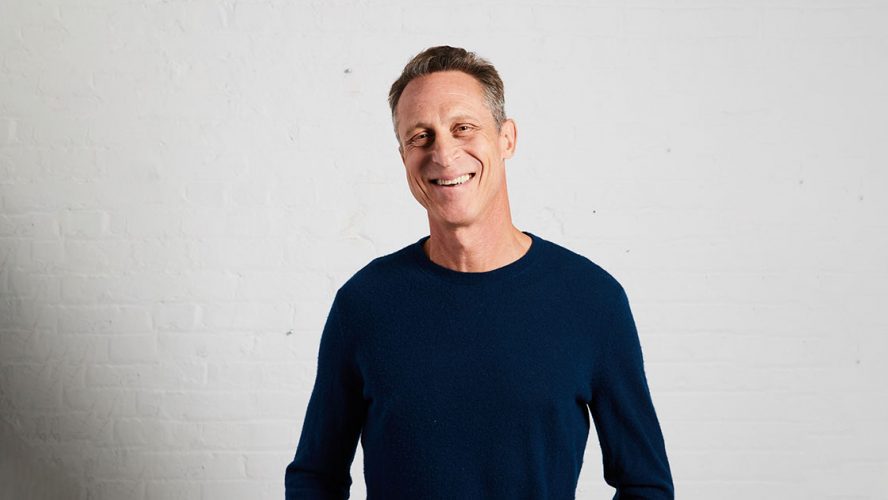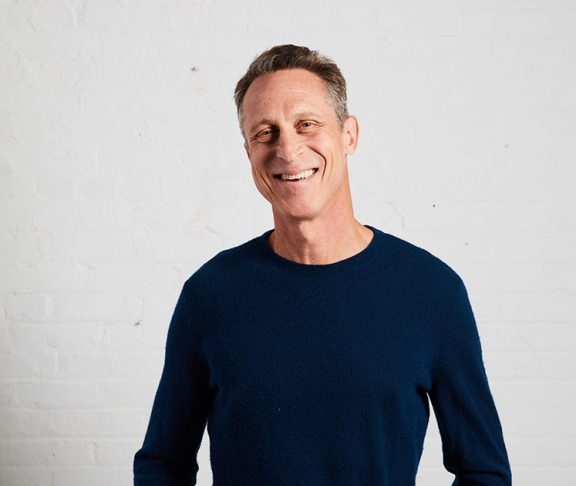What is “diabesity,” and why is it an issue? Dr. Mark Hyman, founder and director of The UltraWellness Center, explains how to prevent this problem.
How did you coin the term “diabesity”? When did it start? Why is it such a problem?
Diabesity is the continuum of abnormal biology that ranges from mild insulin resistance to full-blown diabetes. 34 million have Type 2 diabetes and nearly 1 in 2 Americans has pre-diabetes. 290 million Americans are metabolically unhealthy.
This is the direct effect of our hyper-processed diets, riddled with excessive starches and sugar. If you are obese, overweight, or suffer from a chronic disease such as diabetes, your risk of getting very sick and dying from COVID-19 is significantly higher. This is a huge problem, and now is the time to address it.
We’re currently the most “sustainable” with food, so why have obesity and diabetes tripled since the 1980s?
Right now, less than 3 percent of our agricultural land is used to grow fruits and vegetables, which should make up 80 percent of our diet. A hundred years ago, all food was organic, local, seasonal, and fresh or naturally preserved by ancient methods. All food was food.
Today, there are not even enough fruits and vegetables in this country to allow all Americans to follow the government guidelines to eat 5 to 9 servings a day. What most of us are left with is industrial food. And who knows what lurks in the average boxed, packaged, or canned factory-made science project. The reason we’re struggling with an obesity and chronic disease epidemic is because pretty much everything that is available at the grocery store is ultra-processed.
This junk food is really cheap, and buying organic fruits and veggies is expensive. Subsidies are given to grow crops like wheat, corn, and soy, which are the foundation of all processed foods. Vegetables and fruits are considered specialty crops and farmers don’t make as much money when they grow what’s good for us. The problem is the entire modern food system, which was designed to put profit above health.
We need to overhaul this system before it becomes too late. And unfortunately, the Standard American Diet (SAD) is the worst diet in the world, and we’ve exported it to every country on the planet. Our food system is also responsible for almost half of all greenhouse gas emissions — from deforestation, destructive agricultural practices, food waste, and soil loss and damage (which accounts for one-third of all the carbon now in the atmosphere, or 300 billion tons of CO2). One-fifth of fossil fuels are used for our food system, which is more than transportation from planes, ships, cars, and trucks combined. I advocate moving toward regenerative agriculture, which is one of our main solutions for ending the climate crisis. It works by restoring the largest carbon sink on the planet — our soil.
You’re a well-known leader in the food space for advocating for a sustainable diet. Are there other solutions for reducing diabetes? How has the pandemic affected this?
This is a very stressful time for many folks. We’ve also been given a lot of time to think, reflect, prioritize what is important to us, and slow down. Unfortunately, the stress of the world makes that hard to do, and I’ve talked to many people who feel like they’ve gained weight from being sedentary and stress-eating.
I understand, but as we now know, obesity and chronic disease make you more susceptible to the dangerous effects of COVID-19. This is the time to take action and get healthy. If you can’t go outside, try working out at home. Try the 7 minute workout. A lot of us are cooking at home too, which is great. This is an opportunity to eat well, and it doesn’t have to be expensive. Prioritize loads of colorful plant foods that contain powerful polyphenols, which fight off disease. Eat clean protein, necessary for muscle synthesis, and add some fats from olive oil, nuts and seeds, or avocado. I promise that taking care of yourself makes you more resilient.
What are the underlying causes of diabetes that young people can start to reverse now?
When your diet is full of empty calories and an abundance of quickly absorbed sugars, liquid calories, and carbohydrates (like bread, pasta, rice, and potatoes), your cells slowly become resistant to the effects of insulin and need more and more to do the same job of keeping your blood sugar even.
Thus, you develop insulin resistance. A high insulin level is the first sign of a problem. The higher your insulin levels are, the worse your insulin resistance. Your body starts to age and deteriorate. In fact, insulin resistance is the single most important phenomenon that leads to rapid and premature aging and all its resultant diseases, including heart disease, stroke, dementia, and cancer. The best way to combat this is to reduce or remove all of these quickly absorbed sugars and carbs. Stick to whole grains (e.g., quinoa, brown rice, or wild rice), not whole grain flours (e.g., bread, pasta, or cereal).
A sedentary lifestyle is also a contributing factor. Get up and move. Start by going on a 30-minute walk daily and work your way up to HIIT training. Finally, stress causes imbalanced blood sugar. Find a way to actively manage stress, whether it be meditation, yoga, breath work, talking to a friend, etc.
What are the best steps to take as soon as someone is diagnosed with diabetes? What should their day look like food- and exercise-wise?
Immediately, I get them on the “Pegan” diet, which combines the best of a Paleo diet with the best of a vegan diet. Here are the rules:
- Very low glycemic load: low in sugar, flour, and refined carbohydrates of all kinds. If they are up for it, I have them remove all grains and starchy beans for a few months.
- High in vegetables and fruits: the deeper the colors and the more variety, the better. This provides a high phytonutrient content protective against most diseases. The Paleo camp recommends lower glycemic fruit such as berries; I usually recommend sticking to low glycemic fruits like berries for anyone who has diabetes.
- Low in pesticides, antibiotics, and hormones, and probably no or low GMO foods.
- No chemicals, additives, preservatives, dyes, MSG, artificial sweeteners, and other “Franken-chemicals” that you would never have in your pantry.
- Higher in good quality fats: omega 3 fats for all. And most camps advise good quality fats from olive oil, nuts, seeds, and avocados. Although some, such as Drs. Esselstyn and Ornish, still advise very low fat diets for heart disease reversal.
- Adequate protein for appetite control and muscle synthesis, especially in the elderly.
- Ideally organic, local, and fresh foods should be the majority of your diet.
- Avoid all gluten, most dairy, and refined sugar.
Exercise will look different for everyone. Try 30 minutes of walking daily. Try the 7 minute workout at least three times a week. Work your way up to lifting heavy weights, which I think we all need to do, especially as we get older.
There are countless families in the United States that struggle with obesity and unhealthy food choices. What can people in those families do to not fall victim to the environment they’re in?
Get smart about nutrition. Despite the media hype and the seeming confusion amongst doctors, the basics of nutrition are extremely simple. Eliminate sugar and processed carbohydrates, include whole real foods like lean protein (chicken or fish), veggies, nuts, seeds, beans, and whole grains. Aside from changing your diet, exercise is probably the single best medication for diabesity. Walk at least 30 minutes every day. For some, 30-60 minutes of more vigorous aerobic exercise four to six times a week may be necessary. Stress is a major unrecognized contributor to insulin resistance and blood sugar imbalance. Push your pause button every day with deep breathing, visualization, yoga, and other relaxation techniques.
Start with the basics. I think we were all led to believe that getting healthy is super complicated and expensive, and it’s not. This is how we were meant to live and thrive. Don’t go at it alone. Enlist the whole family or friends. Everybody needs a buddy!

